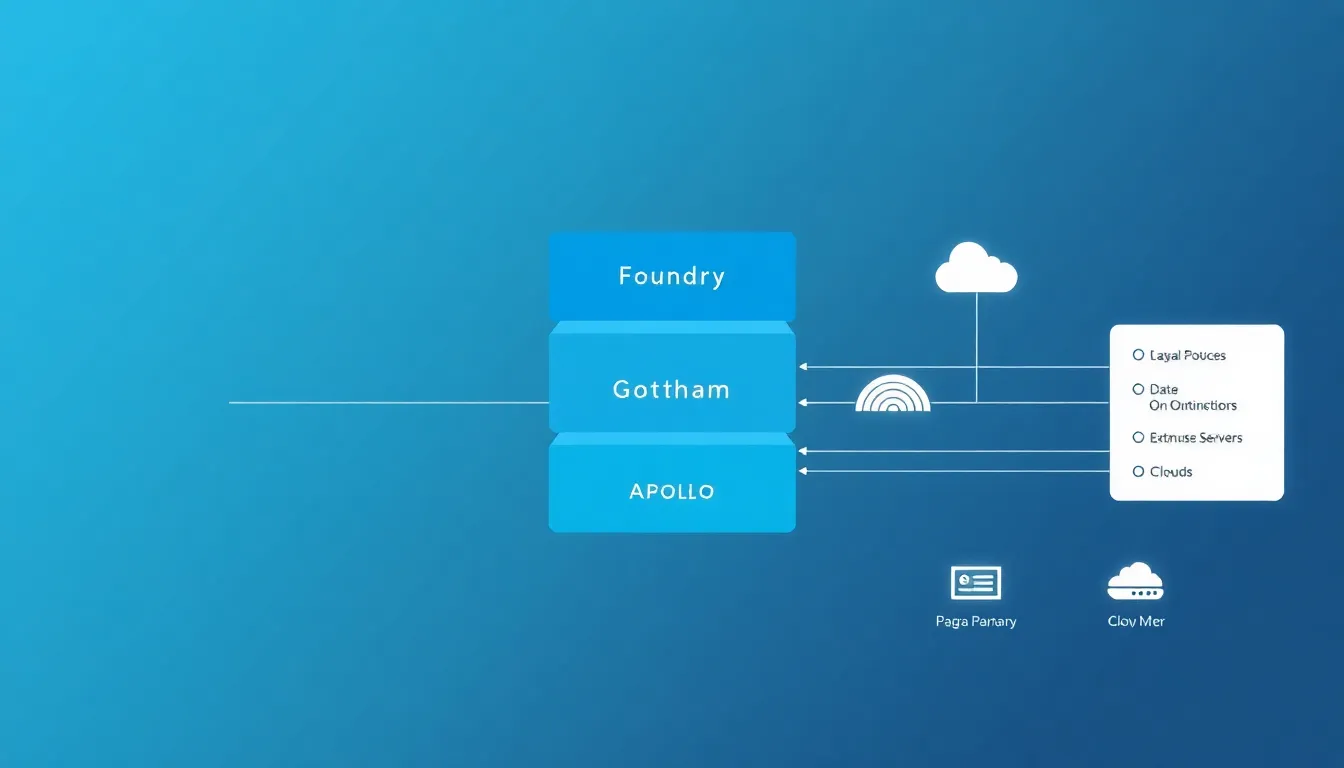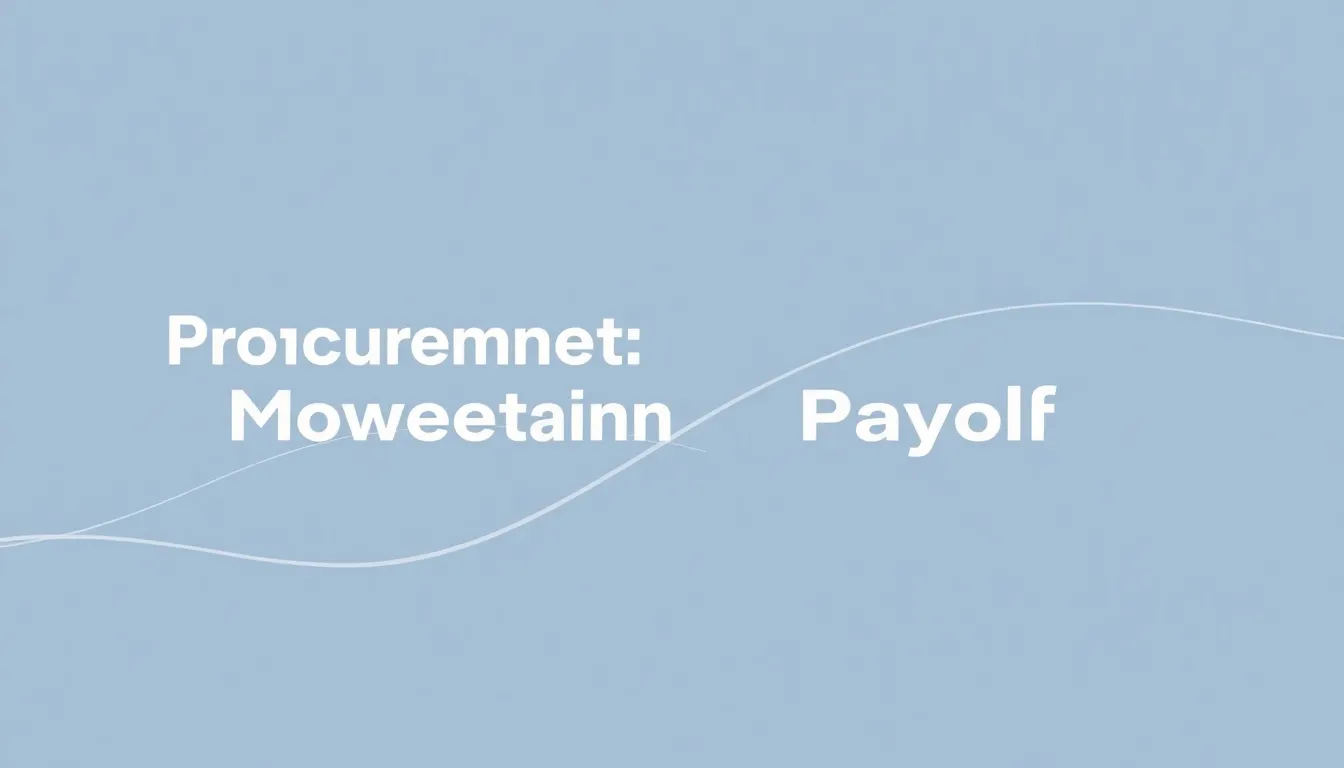From Foundry to Gotham, from Apollo to the Artificial Intelligence Platform, Palantir’s government footprint has grown beyond a few notable contracts into a system of contracts, pilots, and deployments across multiple agencies. What Palantir Actually Does has become a moving target, as the company’s platforms promise to unify data, maps networks, and automate analysis, yet depend on complex deployment choices that can blur lines between public mission and private software. With roughly 8,000 employees, Palantir positions itself as a bridge between data and decision making, a claim reinforced by work with the US Department of Defense, ICE, and the Israeli military. As public perception struggles to keep pace, the two systems named Foundry and Gotham illustrate different uses: Gotham for law enforcement and national security, Foundry for commercial contexts, all orchestrated through Apollo to push updates. The Artificial Intelligence Platform extends those capabilities into analytics, often embedded within government workflows. As Alexander Karp put it in a February earnings call, Palantir is here to disrupt and make the institutions we partner with the very best in the world, and when necessary, to scare enemies, and on occasion, kill them. Yet Linda Xia counters, “It’s really hard to explain what Palantir works on or what it does.” These tensions frame risk, procurement, and governance questions that require careful scrutiny. How should policymakers balance risk, procurement, and governance as Palantir expands its reach?

Guidance: 1024 by 576 pixel canvas; ensure no text on the image; use geometric shapes; emphasize network connections and scale; color palette with blue gray.
Palantir presents a portfolio that reads as a data layer more than a single product. Foundry is the commercial data platform, Gotham is built for law enforcement and government missions, Apollo governs deployment and automatic software updates, and the Artificial Intelligence Platform adds AI powered tools that can be embedded in either Foundry or Gotham. In practice Palantir sits on top of a customer’s existing data systems rather than replacing them, weaving together legacy databases, data warehouses, and streaming feeds into a unified fabric with clear governance and access controls. This placement lets organizations map networks, centralize information, and enforce provenance without forcing a data migration from year to year.
Deployment models range from on premise to hybrid and selective cloud configurations, with Apollo coordinating updates across environments. The governance layer emphasizes auditable workflows, role based access, and transparent data lineage. The firm’s terminology includes forward deployed software engineers who embed with client teams to tailor the platform, as well as Delta and Echo style briefings, FYSA notices, and BLUF style communications to keep decisions tight and focused. Named leaders such as Alexander Karp and Lisa Gordon frame the mission, while Linda Xia and Peter Thiel anchor the origins and public voice. Agencies like the US Department of Defense, ICE, and NATO appear in the landscape, underscoring Palantir’s cautious yet persistent growth.

Canvas description: 1024 by 576 abstract visualization of Palantir’s product stack interfacing with legacy data ecosystems using simple geometric shapes and lines, no text.
Palantir’s government footprint rests on entrenched client relationships and platform logic built to layer onto existing data systems. The company counts the US Department of Defense, Immigration and Customs Enforcement, and the Israeli military among its clients, a lineup that anchors Palantir position as a supplier to government agencies and Fortune 500 firms alike. Gotham, Palantir’s law enforcement and national security platform, can map out a person’s network in minutes and centralize information about a person in one place, a capability that underwrites its promise of rapid situational awareness. The firm also embraces a distinctive internal culture linked to a historic motto, Save the Shire, and notes a fierce internal dialog on difficult issues related to our work. In earnings and public remarks, Karp states, “Palantir is here to disrupt and make the institutions we partner with the very best in the world,” and adds, “And when it’s necessary, to scare enemies, and on occasion, kill them.” Linda Xia cautions, “It’s really hard to explain what Palantir works on or what it does.” Lisa Gordon writes, “proud to support the US government, especially our warfighters,” and that Palantir has “never wavered from its founding mission to support the West and empower the world’s most important institutions.” The public narrative sits alongside critical scrutiny; misconceptions can arise because our products are complicated, but nonetheless, it is absolutely possible to accurately describe them to “people who are curious.” Palantir positions itself toward government and Fortune 500 markets, a stance that invites governance and risk questions about deployment and oversight.
| Product | Primary government use | Key capabilities | Typical customers | Deployment model | Potential governance or privacy concerns |
|---|---|---|---|---|---|
| Foundry | Cross agency data integration and analytics in public sector projects when government engagements involve commercial platforms | Data integration, data modeling, dashboards, governance controls | Fortune 500 firms and select government clients | On premises, hybrid, cloud configurations | Data provenance, access controls, risk of data exposure when used with government datasets |
| Gotham | Law enforcement and national security operations | Network mapping, centralizing person data, rapid situational awareness, policy enforcement | US federal agencies, law enforcement, national security | On premises, hybrid, private cloud | Privacy civil liberties, risk of surveillance overreach, accountability |
| Apollo | Control plane for government software delivery and updates across Palantir platforms | Deployment orchestration, automatic updates, release management, cross platform coordination | IT teams and system integrators at client organizations including government | Cloud, hybrid; control plane across environments | Software supply chain risk, update integrity, audit trails |
| Artificial Intelligence Platform | AI tools embedded within Gotham or Foundry for government analytics | AI tooling, model integration, automation, analytics assistants | Government agencies and major enterprises | Hybrid integration; deployed with Foundry or Gotham; via Apollo | AI ethics bias explainability data privacy governance of AI |
The payoff for contractors and vendors translates Palantir expanding footprint into tangible shifts in how procurement works, how contracts are written, and how data governance is enforced. What Palantir Actually Does becomes a clearer lens for buyers who want integration across Foundry, Gotham, Apollo, and the Artificial Intelligence Platform rather than isolated tools. As a result, procurement dynamics may reward vendors who offer end to end data integration, rapid deployment, and reliable update cycles, coordinated through Apollo as a control plane. Contracts are likely to emphasize governance, auditable data lineage, and security obligations across hybrid environments, with multi year engagements linked to measurable outcomes rather than simple license fees.
For contractors this means building capabilities in data mapping, provenance, and compliant deployment across cloud and on premise infrastructures. The risk landscape widens with potential shifts in policy, export controls, and civil liberties considerations that require transparent model governance and explainability for AI components. Yet there are opportunities to partner on turning data into decision ready dashboards, scalable testing frameworks, and transparent governance processes. Constraints include the complexity of Palantir ecosystems and possible vendor lock in. Vendors that align offerings with Foundry and Gotham roadmaps, and that speak the language of Delta Echo FYSA and BLUF, can position themselves as trusted partners. This payoff ties back to the hero sections and the table by anchoring expectations, governance, and value creation for government agencies and Fortune 500 collaborations.

The Palantir ecosystem sits at a crossroads of data power and public accountability. As Palantir works with the US Department of Defense and Immigration and Customs Enforcement, alongside NATO and the Israeli military, privacy and civil liberties concerns intensify over what networks are mapped and who can see them. An open letter signed by 13 former staffers warned of complicity in authoritarianism, underscoring that governance cannot be an afterthought when Gotham and Foundry weave into public missions.
Palantir prides itself on a culture of fierce internal dialog and disagreement on difficult issues related to our work. This ethos supports scrutiny yet risks opaque decision making. Alexander Karp has framed the mission as disruption that empowers institutions, even as he notes that, “when it’s necessary, to scare enemies, and on occasion, kill them.” Linda Xia adds, “It’s really hard to explain what Palantir works on or what it does,” reminding readers of public accountability gaps.
Cautions from former employees cut to governance and privacy: a tool this powerful must be bounded by auditable data provenance and robust access controls, with independent oversight. One former colleague warned, “it’s a really powerful tool… And when it’s in the wrong hands, it can be really dangerous. And I think people should be really scared about it.” Lisa Gordon anchors Palantir’s broader claim, “proud to support the US government, especially our warfighters,” and the pledge to empower the world’s most important institutions. Policymakers should insist on transparent governance for Foundry Gotham and the AI Platform across environments.
- Due diligence first: verify vendor pedigree, retention of key personnel, and references from comparable government or enterprise deployments; confirm security posture, third party audits, accreditation, and contractual controls before any engagement begins properly.
- Vendor evaluation: map platform modules Foundry Gotham Apollo and AI Platform to your use case; assess data landscape compatibility, integration complexity, data migration needs, service levels, and transition support across hybrid environments.
- Ethics and compliance: require explicit governance reviews on civil liberties, privacy, and export controls; demand auditable decision trails, bias assessments, and clear redress mechanisms for impacted stakeholders.
- Data governance: insist on proven data provenance, lineage, and access controls; define data ownership, retention, and disposal policies; require vendor to map data flows and document governance roles across on premise and cloud.
- Risk management: align with your risk appetite; demand model risk management for AI components, incident response, rollback plans, and supply chain risk controls; perform scenario planning and regular security testing.
- Stakeholder alignment and governance: secure executive sponsorship, create cross agency alignment, define measurable outcomes, and establish transparent reporting; plan training and change management so operations reflect the platform’s intended use and governance expectations. MainKeyword: What Palantir Actually Does; relatedKeywords: Foundry, Gotham, Apollo, Artificial Intelligence Platform.
- Open dialogue and continuous oversight: require ongoing audits, independent oversight, and annual governance reviews; keep procurement flexible to adapt to evolving regulations and public concerns surrounding data use and security; for deeper understanding, explore the other sections of this article. MainKeyword: What Palantir Actually Does; relatedKeywords: Foundry, Gotham, Apollo, Artificial Intelligence Platform.

Looking forward, the balance between capability and constraint will shape how Palantir’s platforms integrate with public missions. Palantir actually does unify disparate data to enable rapid decision making, but the way that occurs in practice depends on client governance, deployment choices, and regulatory guardrails. Foundry and Gotham advance different scopes; Apollo keeps software current across platforms; the AI Platform expands what analytics can do in both civil and security contexts. That fusion creates speed and scale, yet raises questions about privacy, civil liberties, and accountability in real time. Uncertainty remains about how future contracts will formalize oversight, how data lineage will be audited, and how risk will be managed across hybrid environments. The evidence suggests a real and consequential footprint, but one that must be bounded by transparent governance and independent review.
For contractors, success will hinge on offering end to end integration with strong governance, clear data provenance, and robust security postures; for policymakers, the task is to craft proportional, adaptable oversight that protects rights without stifling beneficial innovation. Ultimately What Palantir Actually Does will continue to evolve, and so too must the frameworks that govern its use.

As this investigation closes, What Palantir Actually Does remains closely tied to governance, procurement, and public accountability as Foundry Gotham Apollo and the Artificial Intelligence Platform scale across government missions and Fortune 500 projects. The takeaway is not a single product summary but an ecosystem whose value hinges on data provenance, responsible analytics, and transparent oversight. To maximize search visibility while guiding readers, align anchors and headers with the mainKeyword and relatedKeywords across every layer of the article.
For the core question, see What Palantir Actually Does.
What Palantir Actually Does in Governance, Procurement, and Public Accountability
Cross linking opportunities
- What Palantir Actually Does — link to the central explainer to reinforce the core question
Source: What Palantir Actually Does - Foundry governance and data integration
Source: https://articles.emp0.com/foundry-governance - Gotham in public sector operations
Source: https://articles.emp0.com/gotham-public-sector - Apollo deployment updates
Source: https://articles.emp0.com/apollo-deployment-guide - Artificial Intelligence Platform in government analytics
Source: https://articles.emp0.com/ai-platform-government - Palantir and civil liberties governance
Source: https://articles.emp0.com/palantir-civil-liberties
Future article angles
- Deep dive on AI governance for public sector deployments
- Case studies across different agencies and international partners
- Regulatory and privacy frameworks for Palantir style platforms
- Longitudinal procurement models and contract governance
- Competitive landscape and vendor ecosystems around data integration
Internal linking strategy
- Anchor text usage for mainKeyword What Palantir Actually Does in headers and intro paragraphs
- Use exact match anchors for key internal pages while varying related keywords in secondary anchors such as Foundry, Gotham, Apollo and Artificial Intelligence Platform
- Include internal links in every major section to reinforce topical clusters
Meta descriptions and headers guidance
Main keyword should appear in at least one H2 and the meta description kept within 150-165 characters with supporting related keywords
Use related keywords as natural variations in subheaders such as data integration governance and AI platform analytics
Suggested search terms for readers researching Palantir government engagements
- Palantir government contracts overview
- Palantir Foundry government use cases
- Gotham in law enforcement and national security
- Palantir Apollo deployment model
- Palantir Artificial Intelligence Platform government use
- Palantir civil liberties governance
Closing note: Readers can further explore Emp0 articles for concrete examples and ongoing coverage of Palantir critical governance questions, procurement evolution and the trajectory of government engagements.

